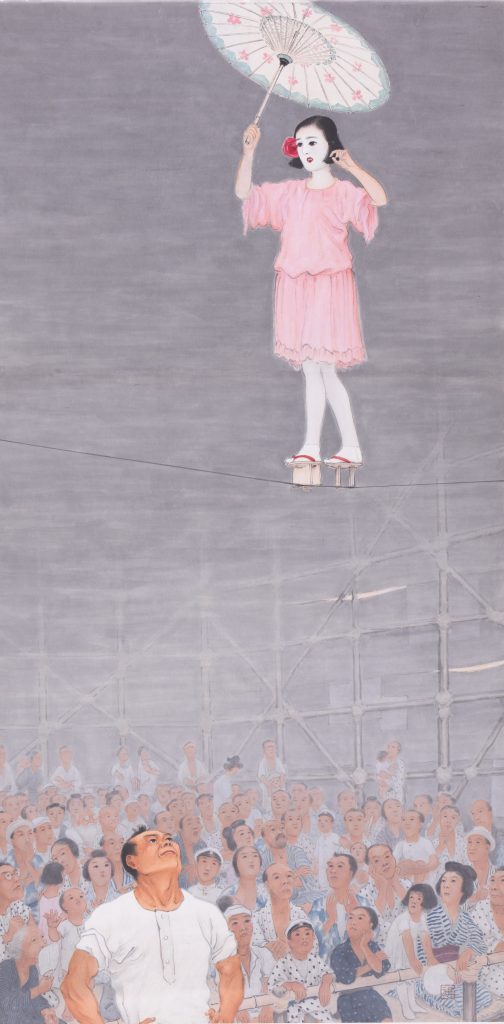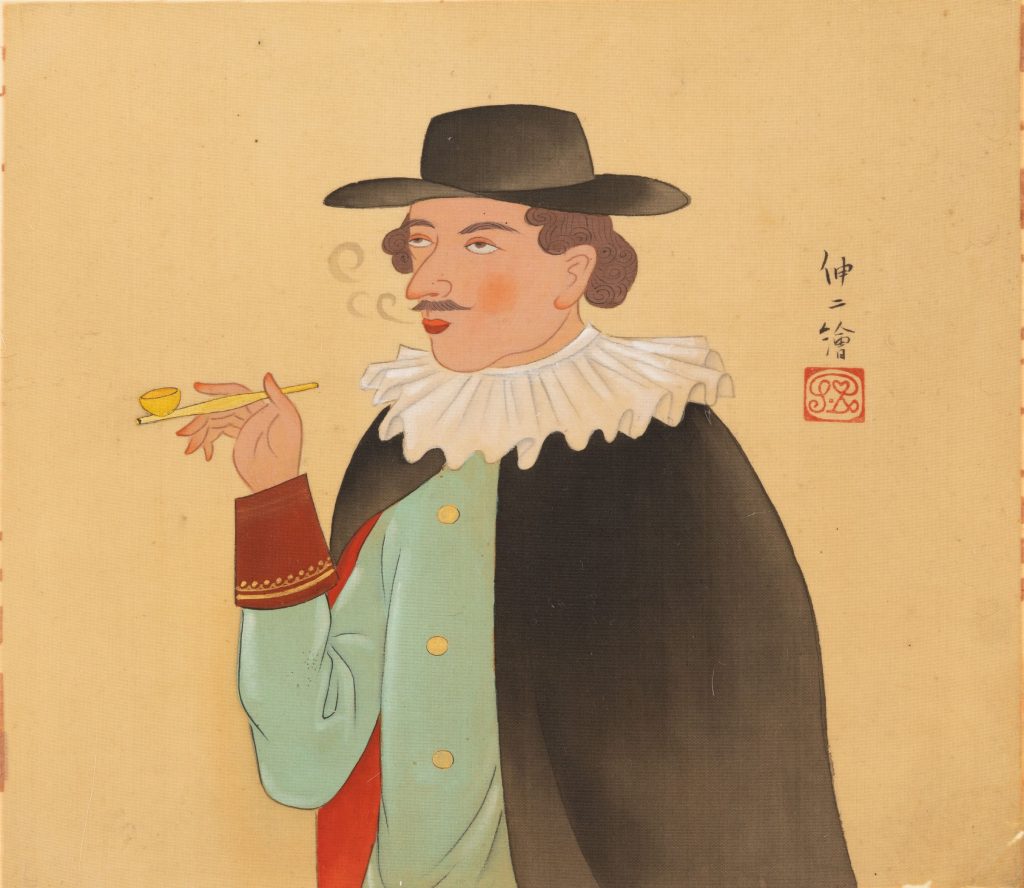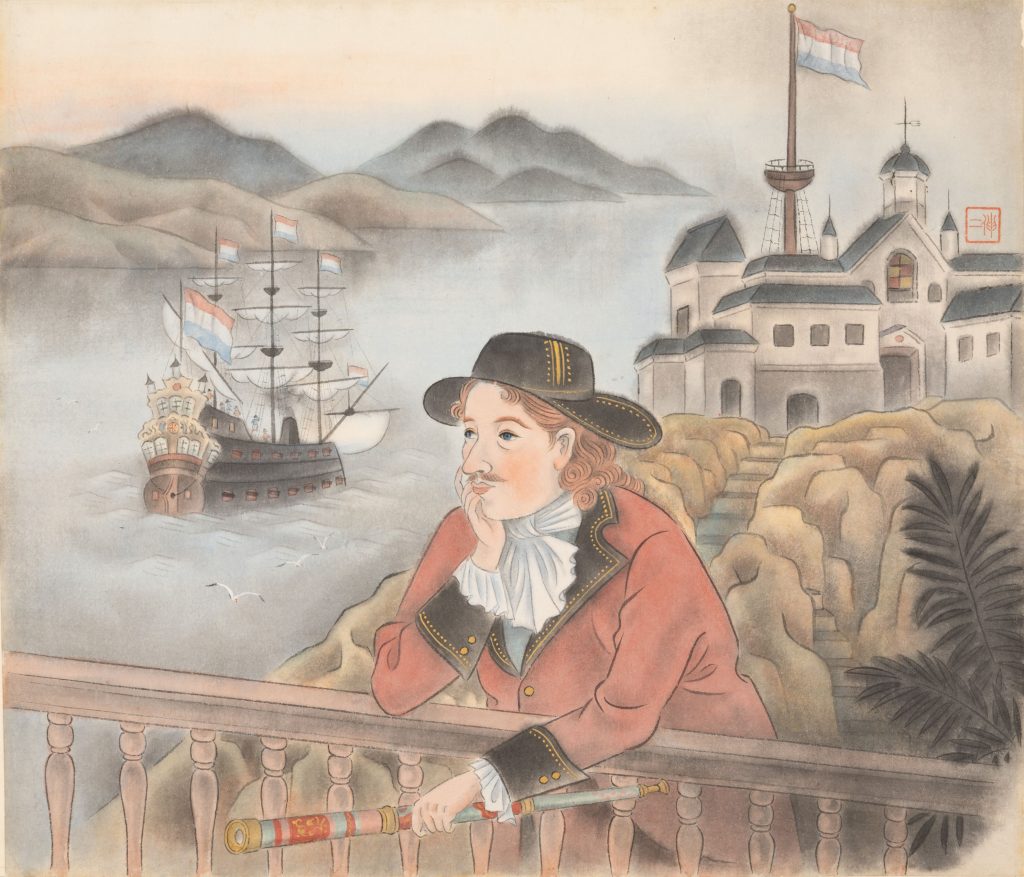Exhibitions
Shining Like Stars: Hoshino Gallery and the History of Modern Japanese Art

Introduction
Welcome to “Shining Like Stars: Hoshino Gallery and the History of Modern Japanese Art,” an exhibition introducing Umi-Mori Art Museum’s entire collection of modern Japanese artworks from Hoshino Gallery.
Hoshino Gallery sits on Jingu-michi, a thoroughfare leading to Okazaki Park in Kyoto’s Higashiyama district. For over 50 years, the gallery has been run by Keizo and Mamiko Hoshino, a husband-and-wife team who unearth, research and showcase works by little-known artists, with selections based not on fame or value but solely on whether a work catches their discerning eyes and stirs their souls.
Since opening, Umi-Mori Art Museum has amassed works by the modern Kyoto master painter Takeuchi Seiho and his pupils. We have also endeavored to expand our collection of modern Japanese paintings by seeking out other works of outstanding originality and appeal. As luck would have it, one day we managed to obtain a series of artworks assembled by Hoshino Gallery. Our Museum and Hoshino Gallery both have a policy of collecting and researching works and materials by unheralded artists in order to introduce them to a wider audience. This sense of deeply-shared convictions was a major impetus behind this acquisition. Thanks to Hoshino Gallery, a number of forgotten artists are now recognized again by art connoisseurs. Though omitted from the history of modern Japanese art until recently, these painters poured their hearts and souls into communicating through their paintings, with their works now forming a major part of our museum’s collection.
This exhibition explores the history of modern Japanese art through these works unearthed by Hoshino Gallery. The exhibition is divided into two parts. Part One (September 6-October 26) mainly features landscapes and bird-and-flower paintings, with Part Two (November 1-December 21) focusing on figure paintings. Art history is predominantly concerned with famous artists, but there are many outside the mainstream who also captured their times with a keen eye and superlative creativity. Over the years, Hoshino Gallery has continued to unearth these artists and introduce them to the wider world. Thanks to their efforts, these artists’ voices can finally be heard. We hope this exhibition serves to tell the story of these hidden masterpieces. Perhaps these works will free us from prevailing value judgements and aesthetic sensibilities to allow us to feel anew the joy of encountering paintings with a fresh eye.
Please enjoy these works by artists who illuminated the world of modern Japanese art like shining stars.
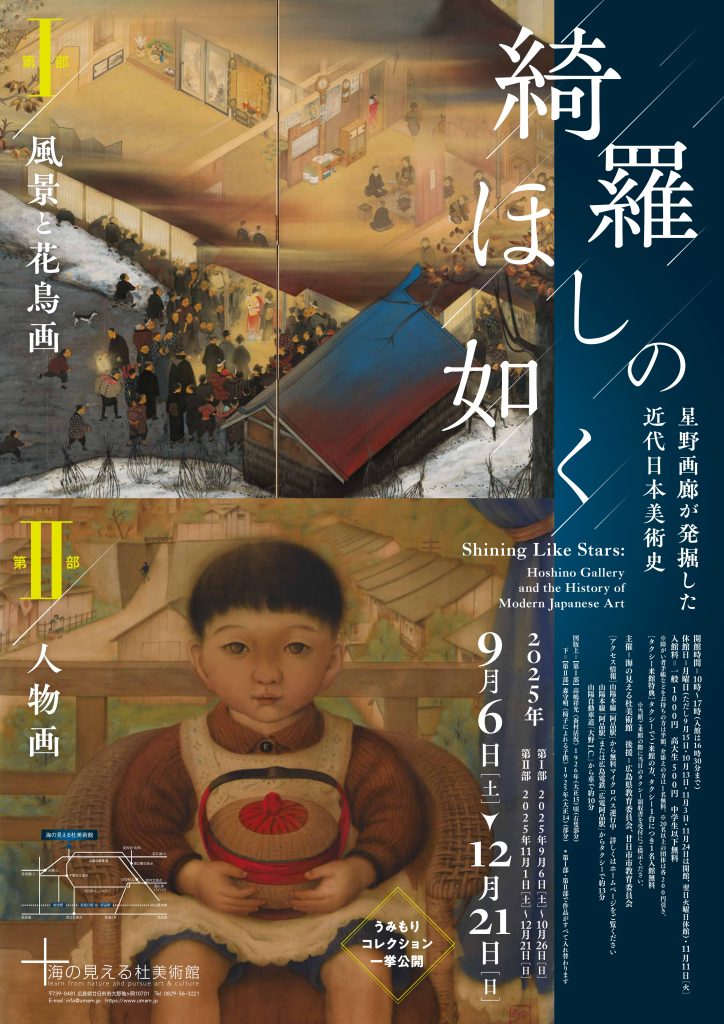
General Information
Hours: 10:00-17:00 (Last entry: 16:30)
Closed: Monday (except September 15th, October 13th, November 3rd, 24th), and September 16th, October 14th, November 4th, 11th, 25th
Admission: General admission: 1,000 yen, High school/university students: 500 yen, Junior high school students and younger: Free
*Admission is half price for people with disability certificates, etc. One accompany person is admitted free of charge.
*Groups of 20 or over will receive a discount of 200 yen per person.
Venue: Umi-Mori Art Museum (10701 Kamegaoka, Ohno, Hatsukaichi, Hiroshima)
With the support of: Hiroshima Board of Education and Hatsukaichi City Board of Education
Part One: Landscapes and Bird-and-Flower Paintings
Part One features works depicting landscapes, birds and flowers.
Since ancient times, Japanese paintings have portrayed famous places, areas of scenic beauty, and flowers and birds imbued with auspicious meanings. Before the modern age, these were mainly painted on folding screens, sliding doors and hanging scrolls to decorate interior spaces.
The value of paintings gradually began to change entering the modern era. Now, paintings were presented before panels of judges and the general public at exhibitions, with painters competing to express their individuality and unique viewpoints. Some painters rebelled against the confines of traditional government-run exhibitions to represent their own unconstrained ideas of beauty together with other like-minded artists.
What emerged were portrayals of daily life and traditional famous sites, only this time filtered through the unique perspectives of each artist. Other works uncovered the scenic beauty of places previously unnoticed. Some painters also sought to capture the vivid lives and beautiful forms of various flora and fauna. We hope you enjoy these paintings of landscapes, birds and flowers infused with the rich individuality of each artist.
Chapter One: Turning the Artistic Gaze Toward Everyday Life
One task of artists entering the modern era was to commemorate the great deeds of the state, with paintings depicting the founding myths of Japan or the nation’s modern-day military victories, for example.
However, rather than using their brushes to memorialize public events, some painters began to portray familiar scenes of rural landscapes or workers. These painters eschewed lofty ideals and exaggerated historical tales to focus instead on real life. They rallied under the banner of naturalism to create works dictated by their own personal interests and feelings. This trend was also propelled by modern societal shifts, with railways springing up to serve the needs of Japan’s rapidly-expanding towns and suburbs. Painters now turned their artistic eye to the rural scenes around them or the lifestyles of people living through modernity in the towns and suburbs.

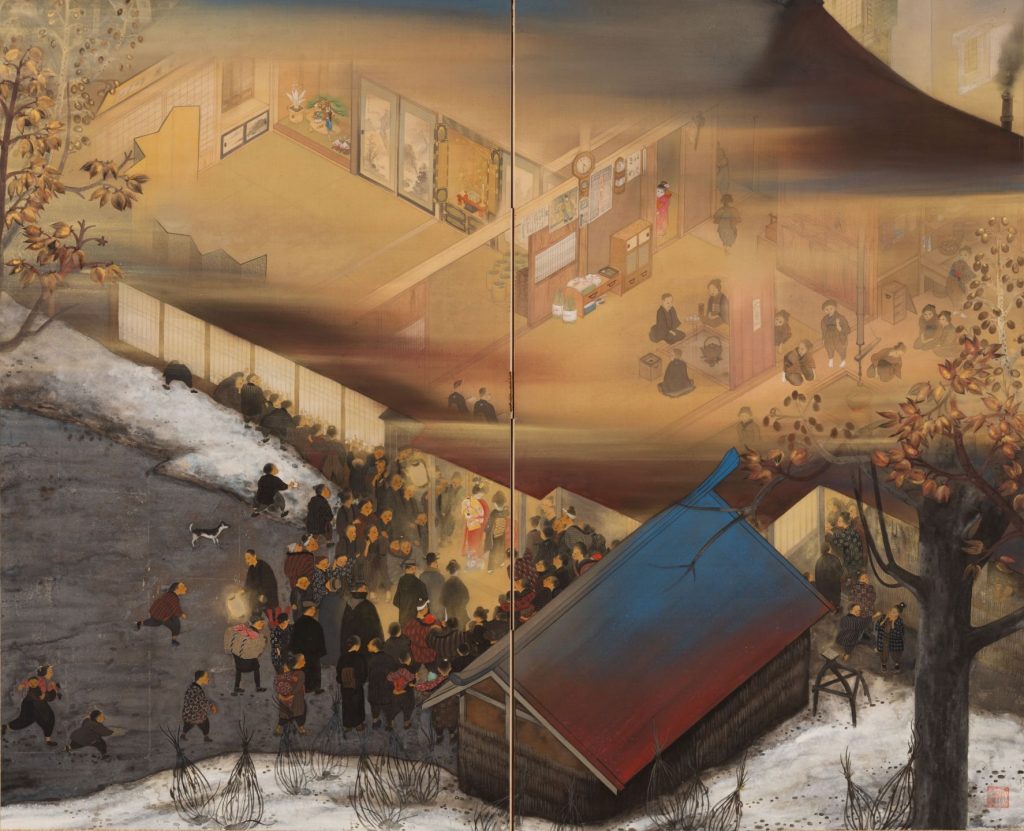
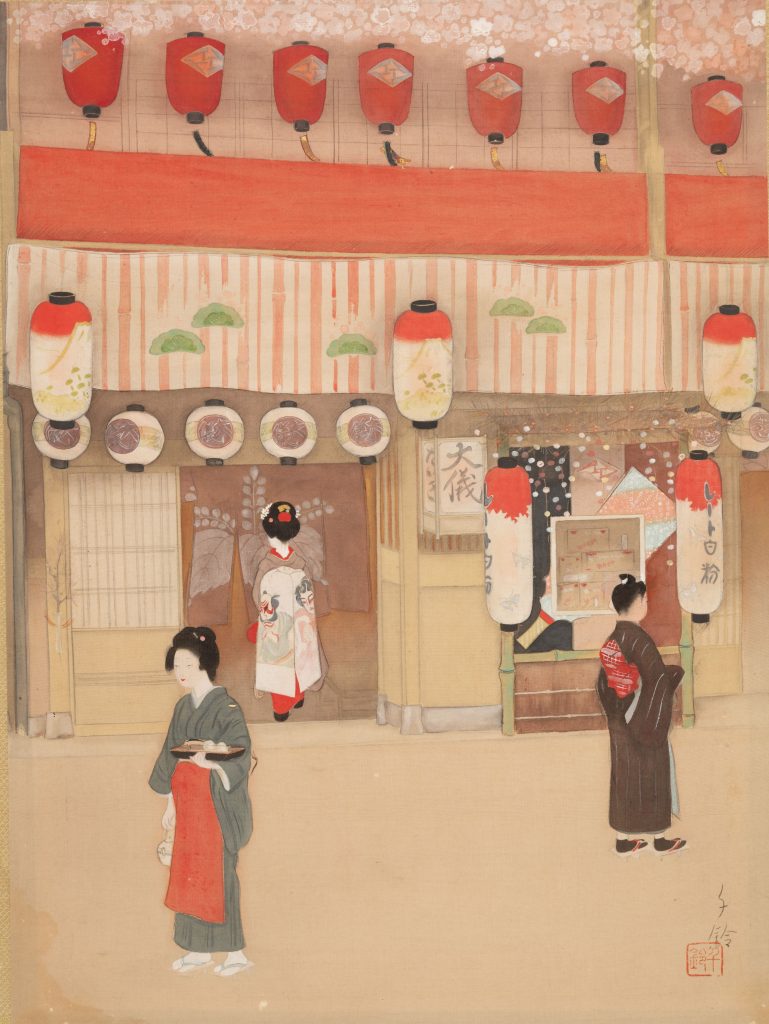
Chapter Two: Portraying Famous and Not-so-famous Places
From ancient times, paintings depicted areas of scenic beauty or famous places mentioned in poetry. Modern painters followed in the footsteps of their artistic predecessors by traveling to these same locations to create paintings infused with their own sensibilities.
This new generation also painted scenery that had not caught the imagination of previous artists. For example, the Seto Inland Sea often features in paintings, but these mainly date to the modern era, when artists discovered the aesthetic value of its landscapes. Ito Shinsui’s The Dunes of Mihara was painted during a trip to Izu Oshima Island. Shinsui was one of many contemporary painters who journeyed to Japan’s southern islands and other regions with warm climes. They were also influenced substantially by western paintings, such as Paul Gauguin’s depictions of Tahiti. Others were moved to paint the strange flora and barren landscapes encountered in these places. The resultant works reveal how these modern artists constantly grappled with the question of “what to paint” as they strived to transcend the confines of pre-existing artistic traditions and perspectives.
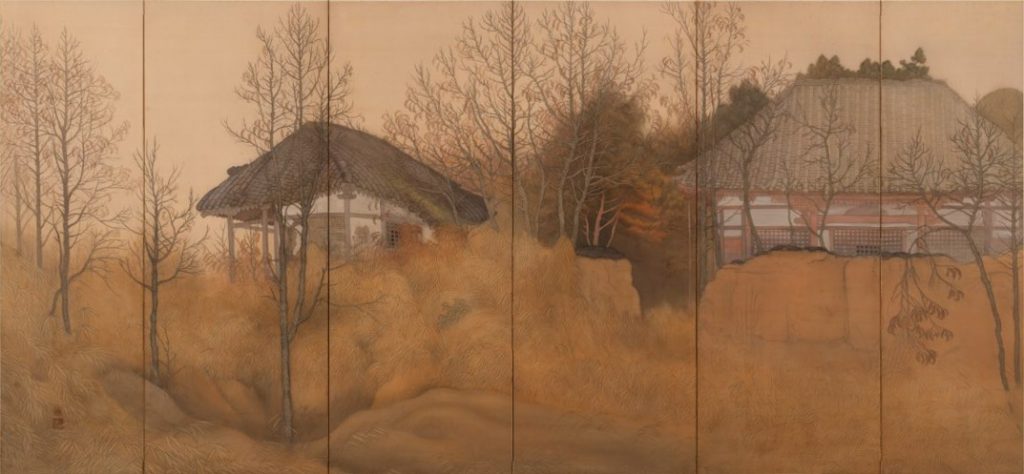
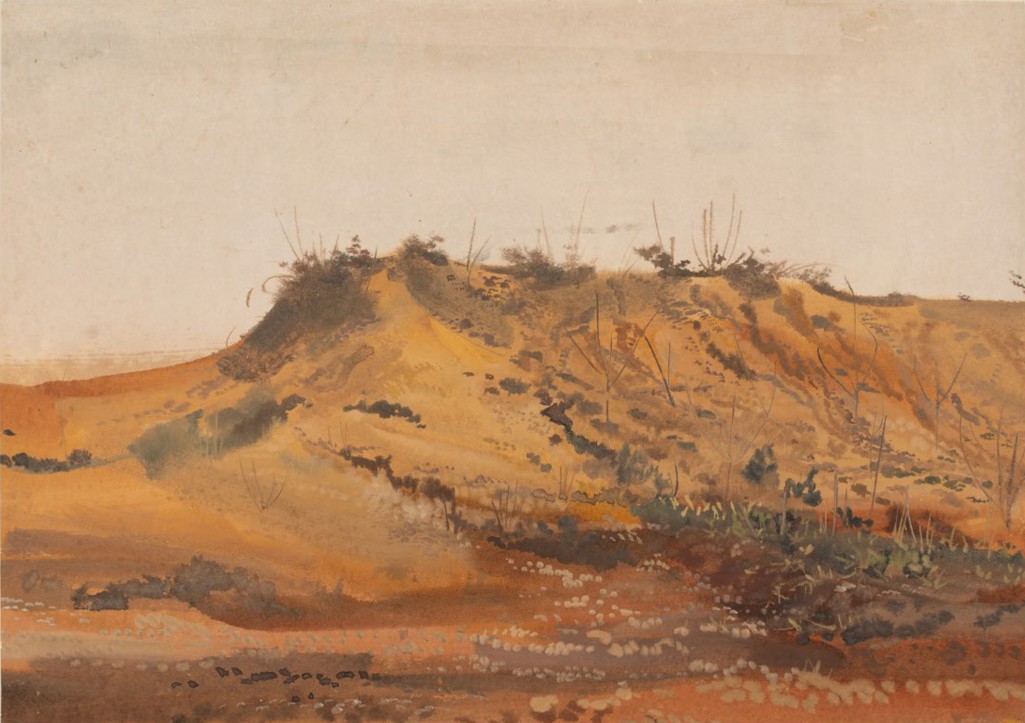
Chapter Three: The Significance of Bird-and-Flower Paintings for Modern Artists
The “bird-and-flower” painting genre came to Japan from China. It originally involved flowers, birds, animals and other motifs combined to convey auspicious meanings. This role became less important entering the modern era, though. Eschewing tradition, artists now portrayed the adorability of birds and animals, the beauty of flowers, and the pulsating vitality of life itself, with these new works perhaps described best as “animal paintings” rather than “bird-and-flower paintings.” However, some artists continued to depict traditional motifs like sparrows and bamboo or herons, only this time filtered through modern perspectives, with the format evolving to depict birds and flowers in combination with various plants and trees.
The portrayal of flowers and animals differs according to painter and period. In the Taisho era, artists tried to capture the very feel and vitality of living things using meticulous brushwork. Meanwhile, an artistic trend in the Showa era involved arranging the forms and lines of flora and fauna to create well-balanced, intellectually-stimulating compositions. In this way, modern bird-and-flower paintings provide a glimpse into the diverse ideas and motivations of the artists who painted them.

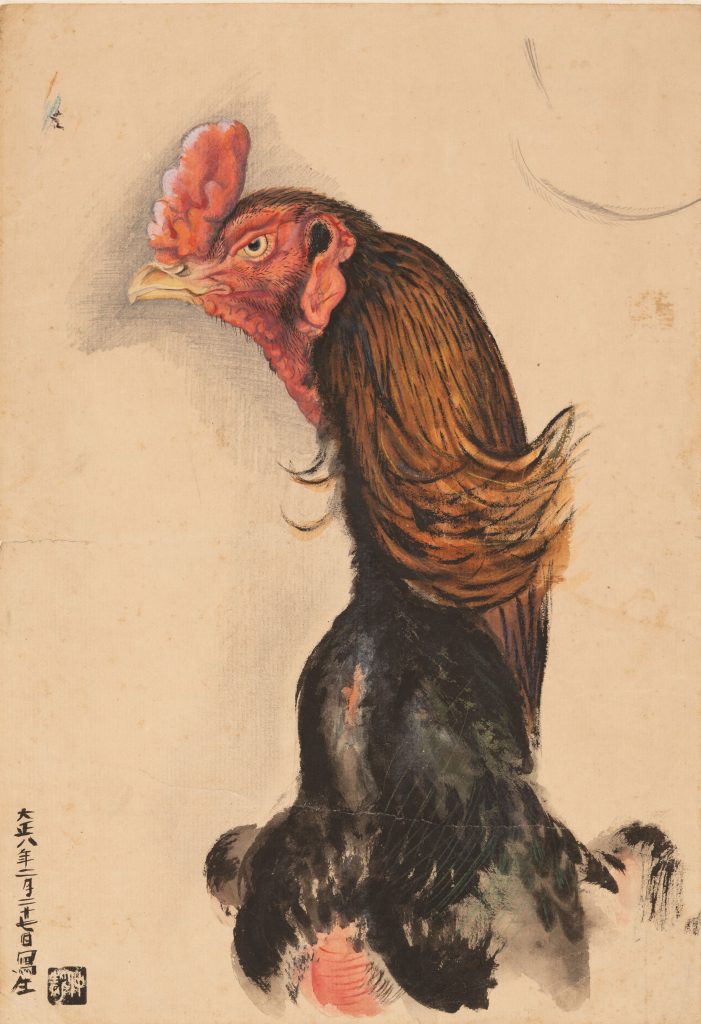
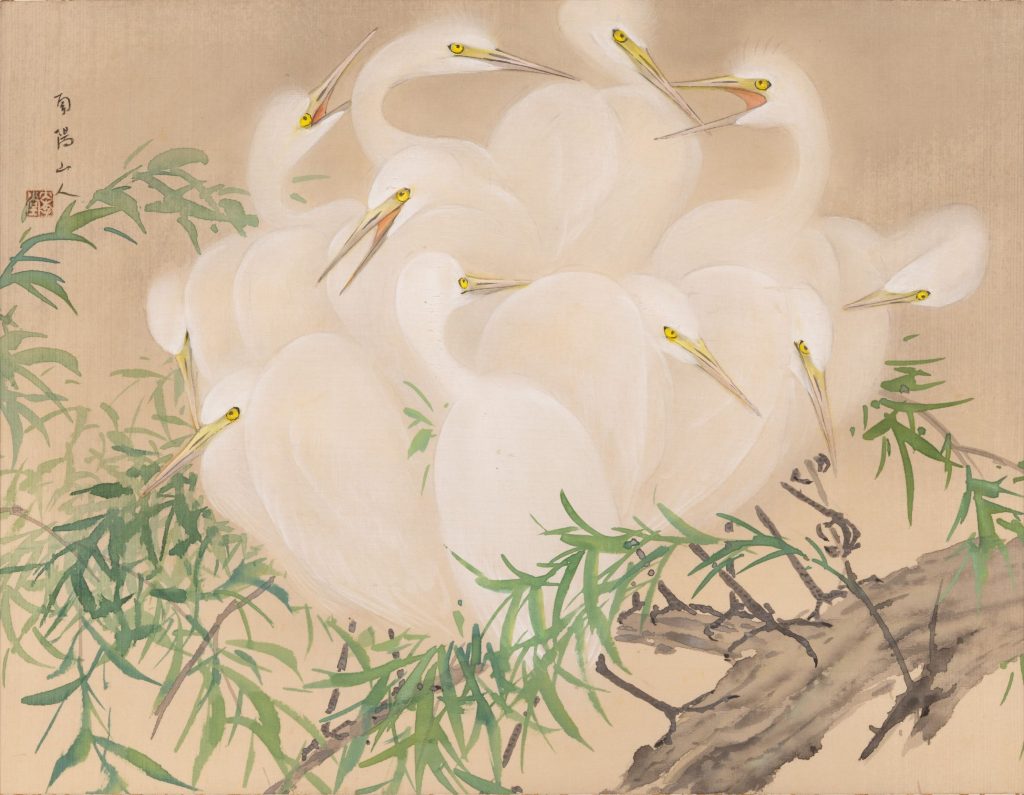
Part Two: Figure Paintings
Part Two features potrayals of people.
With modern Japanese art, this genre is often associated with paintings of historical figures or beautiful women. Indeed, many modern Japanese masterpieces do fall into these categories.
However, further inspection reveals a rich vein of experimentation in modern Japanese figure paintings. Each ‘Bijin-ga’ (paintings of beautiful women) has its own way of expressing beauty, for example. Some ladies wear gorgeous clothes and carry themselves gracefully, for instance, while others are femme fatales who spellbind with their mysterious allure. Though the feminine form was usually chosen to depict human beauty, some artists also portrayed the attractiveness of the male body too.
Other subjects fall outside the confines of our conventional notions of “beauty.” As Western ideas and philosophies flowed into Japan entering the modern era, conceptions rapidly formed about the ideal “family,” something regarded as the bedrock of the Japanese state. People who stood outside these idealized conceptions were often ostracized, but some painters took it upon themselves to depict this ostracism and the troubled lives of these outsiders. This phenomena was connected to the individualism that took root in society during the fast-changing years of the Taisho Democracy. Other painters were driven by a fascination with the culture blossoming in Japan’s modern towns as well as with kabuki theater, literature, and the histories of each region. As these works reveal, artists engaged with figure paintings for a diverse range of motives.
Chapter One: Beautiful People
Women have been the subject of paintings since ancient times, but beauty paintings became particularly popular with the rise of the ukiyo-e genre during the Edo period, with this theme remaining fashionable into the Meiji era. ‘Bijin-ga’ (paintings of beautiful women) experienced a further boom with the inauguration of the Ministry of Education Fine Arts Exhibition (Bunten) in 1907 (Meiji 40), with Bunten even establishing a Bijin-ga Gallery in 1915 (Taisho 4).
This exhibition does not feature Uemura Shoen or Kaburaki Kiyokata, two representative bijin-ga artists, though it does include works by Masuhara Soichi, an unconventional painter who died at an early age, and female painters like Osaka’s Shima Seien and Kitani Chigusa. Through their works, we can see how modern painters expressed feminine beauty in their own richly-diverse ways.
Among these, Kyoto’s Kainosho Tadaoto was an artist who chased a unique vision of beauty. Nudes were uncommon in ‘Nihonga’ (Japanese-style paintings), apart from depictions of naked angels, but Tadaoto strove to represent real female nudes and the living, breathing beauty of their physical forms. He is also noteworthy for depicting the supple beauty of the male body too. As various rules, regulations and painterly conventions sprung up in the modern era, Tadaoto continued to paint male beauty in blithe disregard for socially-accepted ideas and values, with the existence of painters like him overlooked until now. We hope you enjoy this glimpse into the diverse ways modern artists represented human beauty.
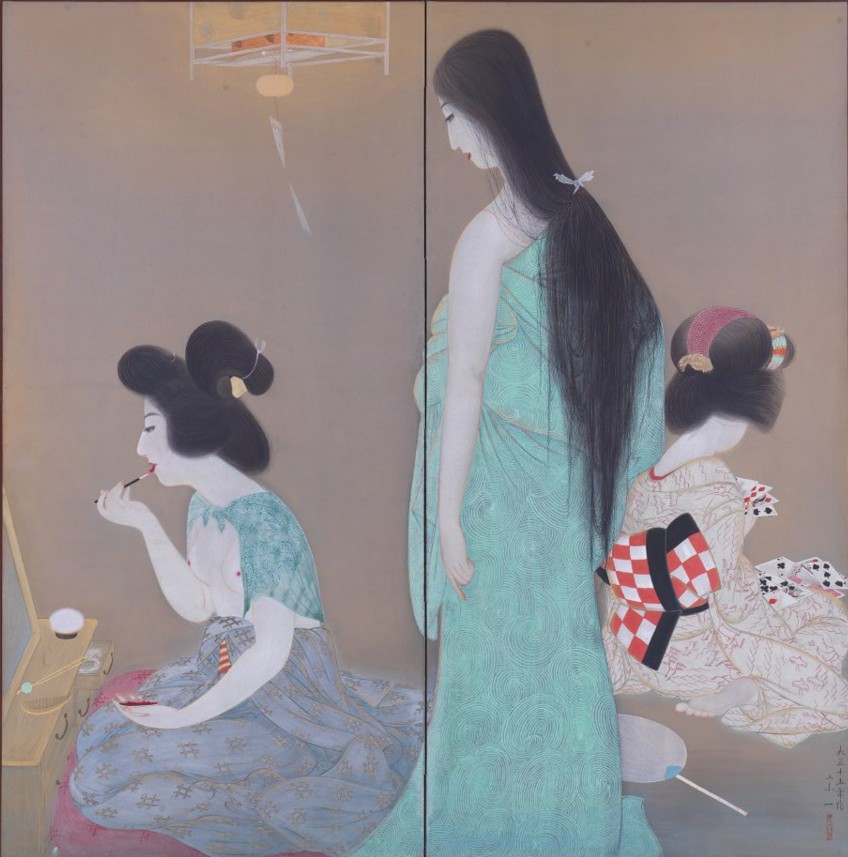
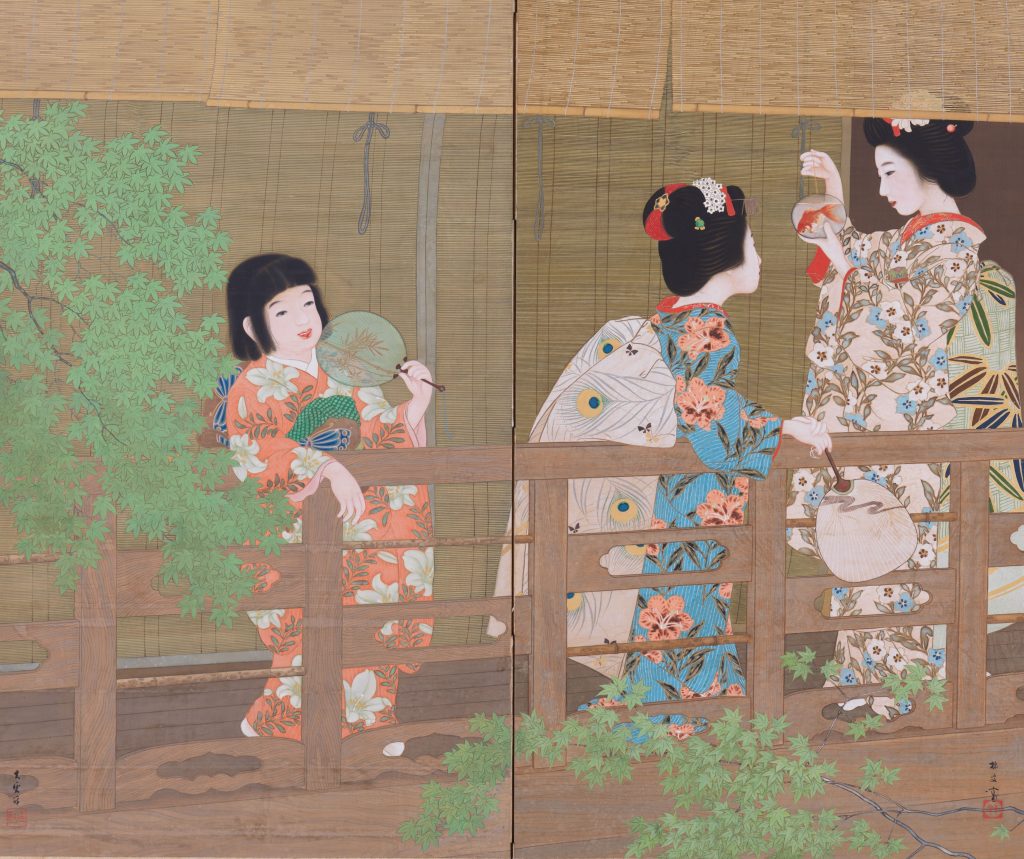
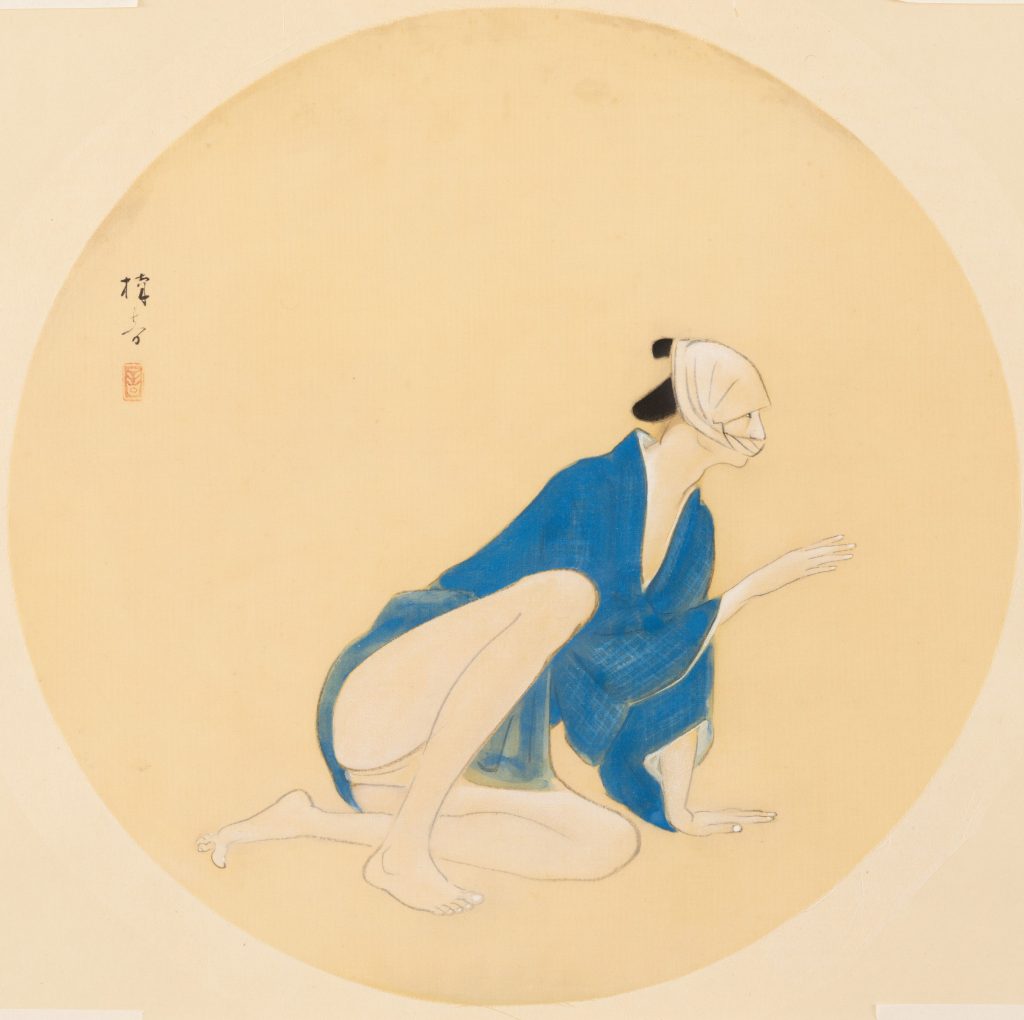
Chapter Two: Portrayals of Workers, Families and Modern Society
Japan established a public education system in 1872 (Meiji 5), soon after the advent of the modern era, with education now offered to all children regardless of gender. In this “age of the child,” the life of a Japanese person was determined by the school they went to and the system they studied under. Eventually, aprons, large ribbons and other clothes were made specifically for children, with painters also turning their eyes to the cuteness and beauty of youngsters clad in this new attire. Women who appear to be mothers also appear in many modern works. These paintings were influenced by ideas about the ideal family, where a woman’s role was as a good wife and a shrewd matriarch charged with raising healthy kids. This marked a clear change from the way children had previously been depicted as symbols of the “prosperity of one’s descendants,” with these new paintings also a product of modernity. Artists were driven by a fundamental urge to eulogize motherhood, but perhaps these works also reflected a veiled social demand for the rearing of the manpower needed to drive breakneck social development. However, contemporary society was also supported by people who fell outside these ideals, including prostitutes and children forced to work from an early age. Many artists believed the true role of painting was to depict the social realities and contradictions beneath this idealized surface.
It was not all about suffering, though, with figure paintings also portraying hale and hearty women at work in the suburbs or in the southern islands. As with the French painter Paul Gauguin, many contemporary artists sought to portray women living within nature, far away from the rational individualism rampant in the towns and cities. The works in this chapter reveal the idealized conceptions and realities that emerged amid a time of rapid social development.
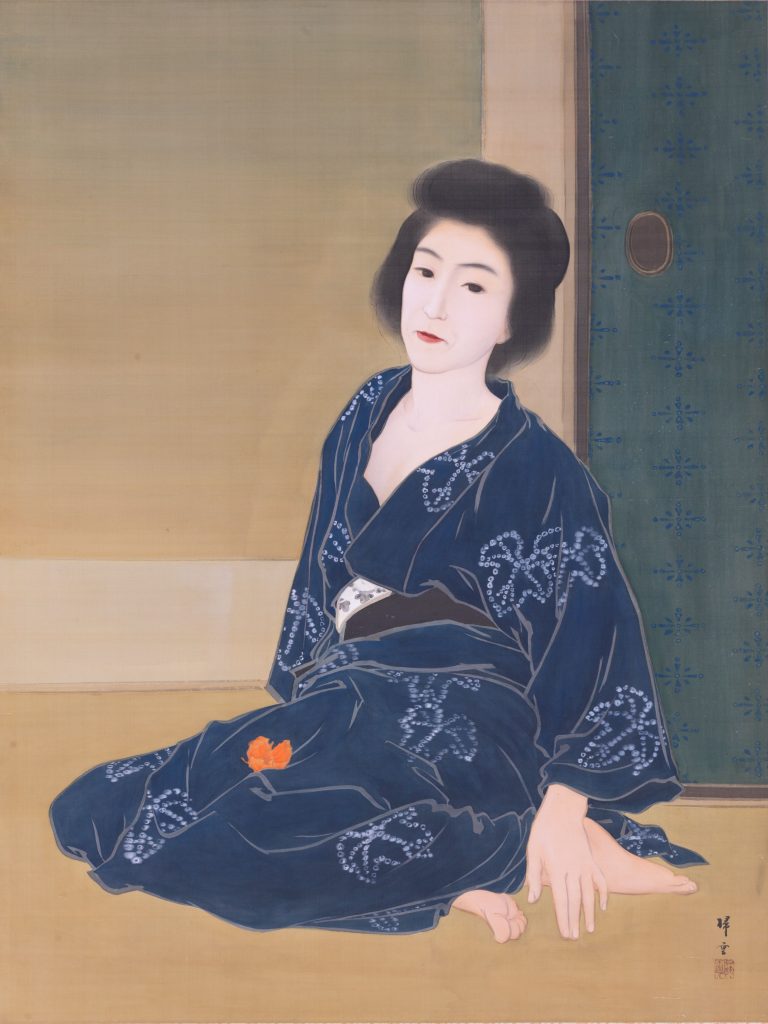
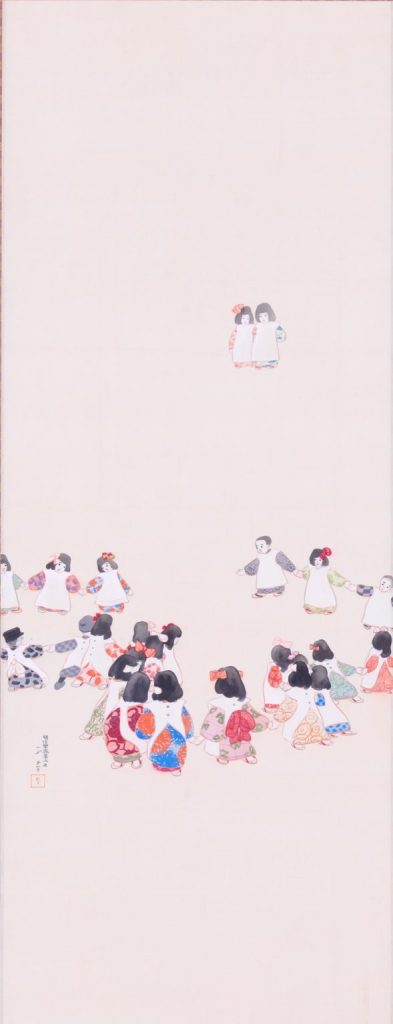
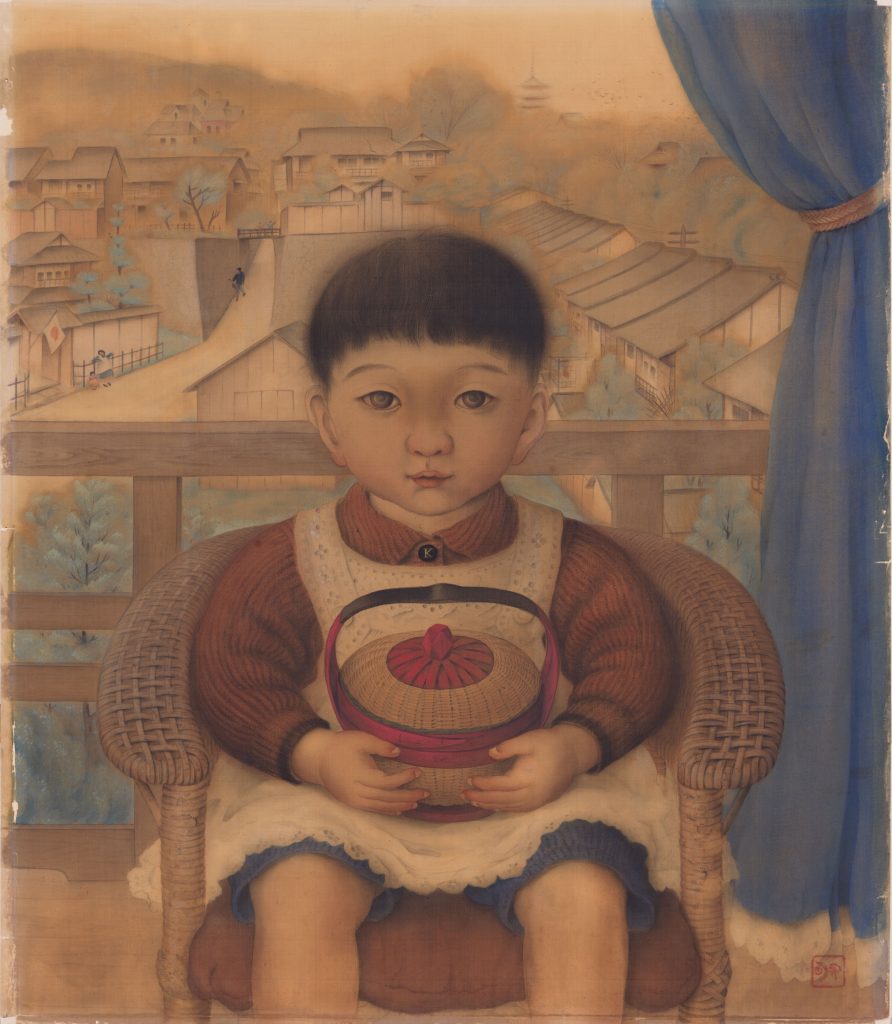
Chapter Three: The Strange, Unfamiliar Subjects of Modern Paintings
This chapter features some unusual works that, from a distance of a hundred years or so, may have people asking – “Why on earth did they paint this?”
Iguchi Kashu’s Dancing depicts dancers floating across the canvas in dreamlike fashion. It conveys the pomp of the modernist culture that enlivened Japan’s towns as Western amusements flowed into the country. Many extant works also depict kabuki, a performing art that emerged in the Edo period and remained popular thereafter, with these revealing a deep admiration and affection for kabuki and its performers.
The influence of Western literature is also apparent in portrayals of long-haired, whiteskinned mermaids enticing people with their mellifluous voices. People loved reading about the tragic fate of mermaids and how they lured people to their deaths, with Japanese authors like Tanizaki Junichiro also penning mermaid tales. Many Japanese painters also depicted these creatures, with Miyake Kohaku’s Mermaids providing a great example of this genre.
Kayukawa Shinji’s Westerner was inspired by the painter’s fascination with the history of his hometown of Sakai. In fact, we can find a whole range of characters in these modern Japanese paintings, including a priest wandering in the wilderness and a Middle Eastern woman puffing on a hookah. The paintings reveal another aspect of society back then, with these figures also serving as vehicles for the ideas of the painter’s themselves.
